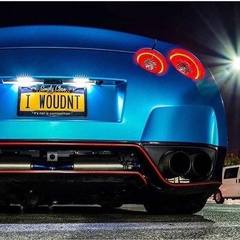-
Posts
2,765 -
Joined
-
Last visited
The Flying Sloth's Achievements
About Me
IMPORTANT!! YOU MIGHT HAVE TROUBLE READING THIS IN LIGHT MODE, IT WAS DESIGNED TO STAND OUT IN DARK MODE, IF YOU'RE HAVING READING DIFFICULTIES TRY CHANGING THAT SETTING.
My basic advice and recommendations when choosing an interface/microphone
@wallaceman105 Suggested I create some videos going over these basic concepts, the playlist can be found here Though I do warn that I have no clue what I'm doing and the videos will be mostly unstructured so apologies in advance if it gets too rambling.
What do I need to use a studio (XLR) mic on my PC?
It's pretty simple really you will need;
- A studio (XLR) Mic
- An Audio interface
-
An XLR cable (if it doesn't come with either your mic or interface)
And Finally - A mounting system of some sort (Ebay 'sort by cheapest' scissor arm works just fine in 90% of cases)
What do I need to know about choosing a mic?
First thing first, the cheap NW/BM series mics found all over Ebay and Amazon are trash and you should not purchase one, they are poor clones of the iSK BM series microphones and they utilise a 20 cent electret element (rather than a real condenser capsule) and the adequate circuitry to drive said electret is simply not present, rather a couple of resistors and a single transistor is what you'll get.
While the massive amount of mics available on a budget may seem crazy at first, almost all of them come out of one of two Chinese factories, ShuaiYin or Feilo. MXL, CAD, Marantz Pro, Nady, Apex, t.bone, Superlux, Alctron, Carvin, IMG Stageline, Presonus, Mackie, TNC, AIR, Joe Meek and many other microphones often share similar or the same circuitry and are often coming out of these same factories. Even 'expensive' microphones from ADK, Advanced Audio, Telefunken, Avantone, Stellar, Mojave or 3U Audio are selling modified versions of these Chinese microphones (with varying levels of customisation). Many 'boutique' manufacturers like Viking Microphones and Weird Audio are genuinely just rebranding Chinese OEM mics (ShuaiYin SYT1200 and Alctron CS95 respectively) And making a massive profit off it so it's important to do your research before thinking you're getting a great deal on a 'pro' microphone. Almost all cheap condenser mics from China copy a Neumann K67-type capsule without the EQ circuit found in the U67 leading them to be extremely sibilant (lots of harsh, high frequencies, picks up tonnes of the ess sound) and that isn't pleasing to the ears.
The AT 2020 and 2035 are consistently recommended both here and everywhere else and certainly aren't bad microphones if you don't have much background noise (there's a reason they're the low budget go-to), if you do have background noise you may want to use a dynamic microphone. Just remember that Condenser microphones are extremely sensitive (will pick up a tonne of background noise) and Dynamic microphones will often require an inline preamp to get any decent volume out of them (like the Klark Teknic CT1) and using a dynamic mic without one can make it sound very lifeless, just something to keep in mind. There are a plethora of microphone options available with many microphones rivaling or outright beating the 2020/35 in a very similar price range (Brands like MXL, 3U, ADK, isk and CAD among others) so just take your time finding the microphone that will sound the best in your voice. If you can't try them yourself the Podcastage YouTube channel can be a very useful point of reference.
What about studio headphones, DACs or expensive speakers?
Great question, good outputs are a very important part of any recording/streaming/gaming setup but I'm not afraid to admit I'm not the most knowledgeable on these subjects and as such you won't find a public list of my recommendations for them. Instead I defer to @Derkoli for anything about high-end audiophile gear, speakers or super technical analysis and @rice guru for everything regarding headphones and audiophilia on a budget. I'd like to keep adding to this section so it's easy to find someone who will know the solution to any question so just let me know if you have any suggestions.
What is an audio interface and why should I use one?
To simplify things, an Audio Interface is how you get the signal from an XLR mic into your PC.
No matter what you may have heard from Youtube, an Amazon listing or elsewhere, if you are purchasing an XLR microphone YOU WILL NEED AN AUDIO INTERFACE to send that microphone signal into your computer. No XLR to 3.5mm adapter, phantom power supply or little USB sound card is going to have the preamplifiers, ADC and power supply of an interface.
Audio interfaces share much of the same circuitry as standalone consumer DACs and Headphone Amplifiers but often come in at a much more acceptable price point. While some may argue that consumer systems are 'higher fidelity' or 'sound better' comparing options in a similar price range shows that simply isn't true. Audio interfaces by design must be extremely transparent, not imparting any EQ or effects onto an audio signal which leads to them using DAC and amplification chips designed specifically for that purpose, to create clean, clinical audio. This accuracy may sound less 'musical' than a tube or consumer amplifier but as far as accuracy and fidelity go, for the price it's very hard to find a consumer solution that is 'better than' even a basic interface. Beyond that quality argument interfaces provide you with options for the future, extra outputs and the ability to use high quality microphones should you ever decide to upgrade, these options along with the price are the reason I consider that interfaces are usually better value than standalone systems.
Audio when inside a computer is all ones and zeroes until it goes through something called a Digital to Analogue Converter or DAC for short, computers have DACs built in but they're not exactly the highest quality so some people choose to send those ones and zeroes out of their computer and into an external DAC whether it be standalone or inside an audio interface. Now, the same thing goes in reverse for microphones, your computer has things called Analogue to Digital Converters or ADCs for short that turn the analogue waveform from a mic into ones and zeroes. You guessed it, the ones inside a computer are steaming piles of monkey doo doo without decent preamps or the 48V phantom power that you need for running studio microphones so studios and many people recording at home use the mic preamps, 48v phantom power and ADCs in an interface instead. Now, those ones and zeroes are sent to and from the interface on a USB cable and since digital signals don't degrade nearly as much as Analogue ones do you don't have to worry so much about all sorts of things like shielding and interference.
As for interfaces, most interface options in the low range share the same basic functionality and the only noticeable difference to the average person who wants one just for better discord audio will be limited to aesthetics making it very easy to just recommend the cheapest option that is likely to continue receiving manufacturer support. While this is effective to a point many people choose to run high-impedence headphones or dynamic microphones in which case more attention must be used to make sure the interface has a powerful enough headphone amp and mic preamp. When buying an interface for recording/studio use it's important to consider what features you will need, how many inputs and outputs, inserts, all those sorts of things. If you're looking for lots of channels, expandable IO over ADAT or another standard will be your best friend. Just make sure what you're buying has the features you need and is compatible with the rest of your equipment so you're not stuck trying to shove an RJ45 connector into a Fiber Optic port.
What about USB mics? Can't I just record my music/VO with one of those?
This is going to be a long one so just bare with me,
When comparing USB mics to XLR systems it's important to remember that it's not just price that controls quality, it's also the target market. You or I might be happy dealing with XLR cables, mic stands, low cut filters, pads and gain controls but the buyer of a USB mic just wants a plug and play solution so those extra features aren't available to them. They don't care about the bit depth so they only get 16 bits while we expect 24 and it's expected that they will mostly use it for gaming and voice calls so it's simply not built with the finesse required for exacting studio recording. It's a quick and dirty (and cheap) solution that might work great for gaming, light streaming and voice calls but severely disadvantages you if you're trying to do any serious recording.
The issue is not the fact it's USB. USB is great!
Or as @Derkoli put it,
Quote
The biggest issue is the fact that the microphone is attempting to be a jack of all trades. And it really can't be. It's trying to be a microphone, pre-amp and AD converter all at once.
An XLR microphone just has to focus on being a damn good microphone. Nothing else.
An audio interface just has to focus on being a damn good pre-amp and AD/DA converter. Nothing else.Really, audio interfaces/XLR microphones are vastly favoured in the audio world due to a few things:
If you spend 300 on a USB microphone, you're not spending 300 on a microphone. You're spending 300 on an interface AND a microphone. Hence the lesser quality.
They are not nearly as versatile. If I wanted to, I could plug every XLR microphone under the sun into any of my interfaces, and they would work if they are supplied with +48V phantom power as and when it is needed.
Wanna upgrade? Buy a full new USB microphone/interface system. With an XLR setup, you can upgrade the microphone, or the interface. With a USB microphone, you can only upgrade both at the same time.
You can't shove a USB microphone output into a mixing desk.
Most USB microphones only record at a bit depth of 16. The studio "standard" tends to be 24 bit, due to the increased achieveable Dynamic Range with a bit depth of 24. This gives you greater flexibility during the post-production process.
Trust me when I say that receiving a 16 bit audio file is probably the worst thing in the world for an audio engineer. It's so hard to work properly with such a low dynamic range file, you try and work with the levels of it and you clip the shit out of it more often than not.
USB Microphones tend to be cheap and noisy little buggers. Shoving all that analog circuitry close to a relatively sensitive transducer can fuck with it. Also if phantom power is needed, you can introduce noise from the transformer that is needed to take the voltage from the USB power lines and turn it into +48VDC Phantom power.
Basic recommendations for studio audio equipment (interfaces and microphones)
These mics/interfaces are being recommended based on value for money alone along with my experience as a music producer and performer (stage, studio and otherwise), there are likely many other options that have been left off this list that would be as good if not better that I either have no experience with or personally dislike.
USB Mics:
-
I know nothing about these and would strongly recommend not purchasing one unless you really dislike the idea of upgrading in future and like overpaying for mediocre audio. They often break in weird and wonderful ways that just aren't seen in a good XLR microphone due to the added complexity of ADC conversion among other things in USB mics. If you still really want to buy one refer to this (quite old) shootout. The only microphones I will make an exception for are the Samson Q2u and Audio Technica 2005 due to them being both XLR AND USB, allowing the owner to use it standalone and continue to use it once they get an audio interface. [UPDATE] : It seems the Q2U and 2005 are almost globally out of stock so my new recommendation will be the t.bone MB 88U
[EDIT: Courtesy of @bowrilla]
QuoteUSB microphones with appropriate Win 7 drivers worked perfectly fine under Win 7 but [not with] the ASIO driver support of Win 10. [Many bugs,] especially low volume and so on is because of this. [There is] no way of fixing this except downgrading your OS, finding some older drivers that work with Win 10 or getting a newer USB microphone that is KNOWN to work with Win10. Similar issues can occur with USB audio interfaces if their drivers suck though to my knowledge issues occur a lot less often.
XLR Mics:
If you're still not confident of the differences between dynamic and condenser mics here's a small test I made for someone who wasn't sure what to purchase, there are 6 files, three are the raw recordings and three have basic noise removal done (and a volume boost on the MB75), C2 (Small DIaphragm Condenser) has the wind sock on it that it comes with, ADK (Large Diaphragm Condenser) is using a 2 layer nylon pop filter (the cheap Ebay ones on a gooseneck) and the MB75 (Dynamic) isn't using a pop filter as it has inbuilt wind foam. These were recorded in a room with a fair amount of background noise that isn't acoustically treated in any meaningful way so It should give you a pretty fair idea of what to expect. In these clips the MB75 is not using an inline preamp so you can see the volume difference and why I recommend them.
I haven't done anything else to them, the volumes aren't equal, I just turned the mic pre (same as what's in the UMC202HD) all the way up and recorded in roughly the same quiet speaking voice at 1/2, 2 and 5 foot intervals.
-
Under 100$ (3 examples)
CONDENSER MICS
-MXL V67G (condenser, will pick up background noise, considered a mainstream value for money champion with it earning a spot in many pro studios )
-Behringer C2 (condenser but very directional, supercardioid, so can miss more keyboard noise and whatnot, this is what I personally use for discord calls)
DYNAMIC MICS
-Tbone MB75 (Dynamic, strongly suggest inline preamp, clone of the industry standard Shure SM57 and is just as good, wouldn't be surprised if it was bulletproof)
-AKG P4 [Courtesy of @Derkoli] (Dynamic, strongly suggest inline preamp, Designed as a snare/tom mic so the volume it can take before distorting is immense while still sounding crisp for vocal performances, probably bulletproof)
-
Between 100$ and 200$ (4 examples)
-3U Audio CM1 (Condenser, will pick up background noise but beautiful mic for the money, there's a reason for the 6000 replies on this thread)
-Used ADK Hamburg / Vienna / A6 (Condenser will pick up background noise, have personally used the MK8 Vienna on many vocal applications and given infinite money would buy all the mics from this manufacter or 3U very happily)
-ElectroVoice RE320 (Dynamic, would strongly recommend inline preamp, can be modified to be like its older brother the RE20)
-t.bone SCT 800 (Tube condenser microphone with replaceable socketed tube, same microphone as the renowned discontinued SE 5500 and is great for recording vocals)
-
Bonus Microphones
-3U Audio Warbler series (Condenser, will pick up background noise, Would be great value mics at double the money, considered a 'neumann killer')
-Shure SM7B (Dynamic, would recommend inline preamp, industry standard but personally have trouble fitting it in a mix)
-ElectroVoice RE20 (Dynamic, would recommend inline preamp, the other industry standard large diaphragm dynamic)
-Groove Tubes GT67 (Tube Condenser, hands down best mic I've ever heard used on Discord, use it for all my vocals, considered by some the best mic ever made though that's quite possibly a slight exaggeration)
-Stellar CM5/CM6 (Tube Condenser, both mics consistently play in the same leagues as mics double their price, CM5 is styled after the AKG C12 and CM6 styled after a Neumann)
-Advanced Audio (Some of the most faithful / great sounding mics replicating much more expensive or vintage microphones)
-
Broadcast / Podcast (Dynamic) Microphones
-There are a lot to choose from if this is your specific usecase so refer to this shootout.
There are few (if any) bad microphones between ADK, Advanced Audio, Stellar and 3U Audio, it is very difficult to go wrong with a mic from these 4 manufacturers.
Interfaces
IF YOU WANT TO USE 250+ OHM HEADPHONES ON A LOW END INTERFACE I HIGHLY SUGGEST A BEHRINGER MA400,
-
Between 00$ and 100$ (4 examples)
-Behringer UM2 (just about the cheapest usable XLR input out there, used by Linus himself)
-Behringer UMC202HD (just about the cheapest usable audio interface out there with discrete headphone controls, can power 250ohm Beyerdynamic headphones according to the manufacturer)
-Swissonic UA-2x2 (Prettiest Behringer UMC202 clone)
And Finally
-NI Komplete Audio 1 (Biggest volume knob under $100 and yes, this is the only reason it made the list)
-
Between 100$ and 300$
-Behringer UMC1820 (Cheapest 8 preamp interface, just also happens to be my current interface, has ADAT which is neat for adding another 8 preamps later, can power 250ohm Beyerdynamic headphones according to the manufacturer)
-RME Digiface USB (LIGHTPIPES BABYYYYYYYY, I'm in the middle of convincing myself to upgrade to this one, allows for 32 simultaneous inputs over ADAT, combined with the ADA8200 it's the lowest cost per channel interface available)
-Any of the Focusrite Scarlett stuff (Never been my favourite but I've had to use them in the past and they're not bad, they certainly don't look bad, just not as good value as the Behringer kit, the 2i2 and up can power 250ohm Beyerdynamic headphones according to manufacturer but your mileage may vary)
INLINE PREAMPS (highly recommended for dynamic microphones)
-
Not splitting these by price, just buy the CT1
-Triton Audio Fethead (does the thing and does it good)
-Klark Teknik CT1 (does the thing almost as good but for less money)
-Cloudlifter (does the thing less good than the Fethead for more money)
CURRENT PERSONAL AUDIO GEAR
ordered from cheapest to most expensive per unit [30/04/2020]
-
Roughly colour coded
-BM800 Cheap Ebay Mic (Bad bad not good, electret design, very noisy)
-Klark Teknik CT1 (Inline Dynamic mic preamp, best value for money option for single channel)
-Tbone MB75 (Dynamic mic, SM57 copy, does the 57 thing better than the original, for instruments, drums and vocal)
-Behringer C2 Stereoset x2 (Small diaphragm pencil mics, very directional, use on discord and for guitar/percussion)
-Audio Technica M20x (Cheap headphones, only use them for discord or when recording, sound great for the price)
-Behringer MDX2600 Compressor (Cheap, use it for spoken word, don't use it if you are seriously recording music)
-M Audio Oxygen 61 Midi Keyboard (Does what it's supposed to)
-Superlux CM-H8C x4 (Large diaphragm multipattern mics, natural sound, use them as utility 'throw them on anything' mics)
-Behringer UMC1820 interface (8 mic preamps and expandable over ADAT, two dedicated headphone amplifiers on separate outputs)
-Cascade Audio Fathead 2 (Short ribbon microphone, figure eight polar pattern, excellent when you need a different sound on guitars or a more vintage vocal take, also great for brass)
-ADK Vienna MK8 (Large diaphragm vocal microphone, brilliant sound, quite bright)
-Advanced Audio CM414 (Large Diaphragm multipattern condenser microphone, copy of the studio staple vintage AKG 414)
-Advanced Audio CM47SE (Large diaphragm multipattern tube microphone, copy of the studio staple Neumann U47, Excellent for male vocal and guitars, Peluso capsule)
-Tannoy Reveal 5A Studio Monitors (Older model but still sound great)
-Groove Tubes GT67 (Large diaphragm multipattern tube microphone, beatiful warm sound, use on vocals)
CURRENT PERSONAL INSTRUMENTS
-
Guitars:
Les Paul Purple Burst Flamed Maple
Maton CB70D/6
Kramer Vanguard (offset flying V) 440S
Alvarez AD60-12CE
Hijos De Vincent Tatay Valencia 13
Ibanez GSZ120
Sterling By Musicman SUB Ray5
-
Trumpets:
Getzen Severinsen Eterna (1976)
King Classical
Livingstone 'Dizzy' conversion
Encore Taiwan unknown horn
Bb Bass Trumpet
-
Piano/Keyboard:
Gulbransen 1919 Pianola Conversion
Symphonia DX-200
M-Audio Oxygen 61
Hope that was generic enough to help future someone
Sloth



















